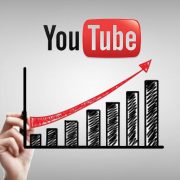If you’ve been on the internet for any length of time or even if you’re a complete newbie you should know the importance of traffic to your business. You may also know that it’s not the wisest thing to “buy” traffic, because once the money runs out, so will the traffic. So how do you get traffic that is so integral to your business? Traffic that’s continuous and best of all free? YouTube can help you with this.
YouTube offers many opportunities for promotion and getting traffic to your site as it has the power to increase your rankings considerably. Just take a look at any Google page and you’ll notice that most times the videos are usually ranked at the top of the page. Here’s why. One, YouTube is owned by Google and they work together. Two, YouTube is the second largest search engine next only to Google. That should be enough motivation to make you want go and create your own YouTube channel and upload videos to it.
But don’t go rushing off to create just yet. Let’s make sure you’re doing this the right way first so you don’t waste your time. Take note of these tips:
Make your profile interesting
YouTube is just like any other social site. So you want to create an interesting profile for networking purposes. People will want to know more about you if they like your videos. This can help build trust among your audience, thus giving you greater traffic. Try to make your profile interesting enough to get across to everyone. Professionally it shouldn’t be too boring or too stuffy. But informally it shouldn’t be too hyped either.
Promote your videos
You won’t get much traffic without viewers. You can’t just post your videos and expect that viewers will automatically find them no matter how good you think they are. You have to promote them. You can put them on your blog or on any of your other social sites.
Use your keyword in the title of your videos
People find your videos when they do searches via the search engines and on Youtube so you should make it as easy as possible for them to find you. I mean you do want to get traffic right? Okay, you should include your major keyword or keyword phrase in the title and in the description. Don’t just put it there though, it should feel natural and make sense. And don’t forget to put them in the tags either.
Know when to post your videos
On the internet timing is everything, you need to know when to do what. So with YouTube it’s no different, it has its peak and off-peak times for traffic. Thursday mornings or early afternoons US time is considered the best day and time to post a video of general interest. Wednesdays is said to be another good day. You need to pay attention to the loading times of your videos as well. Start early for those with internet connectivity issues and for large videos if you want them uploaded in the prime time slots.
There’s approximately an hour of video being uploaded to YouTube every second. This makes it a valuable resource to drive traffic to your site and promote it. However despite the obvious competition, if you consistently produce quality videos with time you’ll reap the benefits of your effort which is to build traffic.
By Tom Denton



